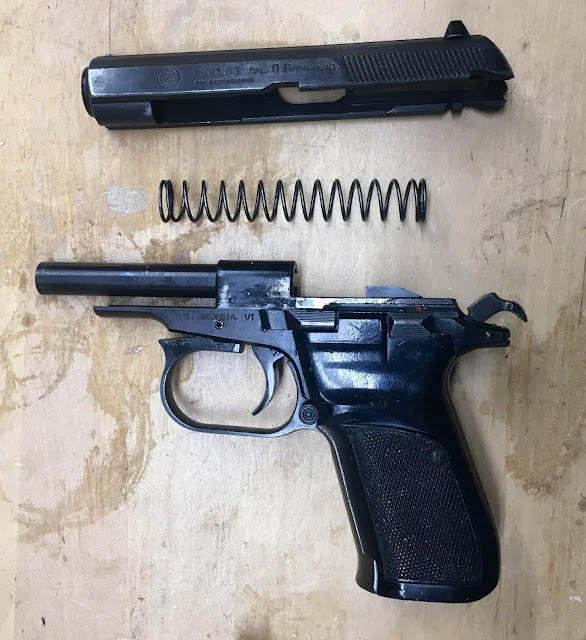Not too long after receiving my CZ83 I took it to a local outdoor range to see how it actually shot. I had a fair amount of .380 practice ammunition on hand, but as this was originally a Soviet-era pistol (the 9mm Makarov CZ82 version entered Czech military service in 1983) I decided to try some Soviet, or at least Russian, ammunition. I found steel cased and jacketed Tula for around $14/50 and decided to see how well that worked in the CZ.
In brief, it worked perfectly. No failures to feed or to eject. Firing behavior is harsh, as you'd expect from a fixed barrel, straight blowback gun. It's not as unpleasant at a PPK in .380, which is what you'd expect, as this is a significantly heavier pistol (32 ounces to the PPK's 23.5) but it's certainly not enjoyable. A well-fitting set of grips would probably help, and I'm still considering ordering a set from grips4u.
As for accuracy- it's pretty good for what is intended as strictly a self-defense pistol. I set up a standard silhouette target at 25 yards and as you can see below, I managed to keep all my shots on the target- roughly in a 10" circle. If you exclude my first few shots, taken as I was getting used to it, most of my shots fell within a 5" circle. With practice I suspect I could tighten my groups significantly. I'd also like to compare the performance of the TULA ammunition with brass-cased ammunition.
My shots tended to hit around 4-5" left of center. That may be due to the sights not being aligned properly, or it may be me pulling the shots left from poor trigger control. Regardless, accuracy is more than good enough for the purpose it was designed for.
In my original post on this pistol I mentioned that it was one of a batch of pistols that was recently imported, and I decided that if I had any interest in it I ought to jump on it before they disappeared and prices went up. Well, it's been just about two weeks since I ordered mine, and none of the suppliers who were offering them two weeks ago have any in stock. More may be coming in eventually, but for the moment, if you want one, you'll probably have to pay more than you did two weeks ago.
UPDATE:
Since writing this, I've learned that the Czech police phased out the CZ 82 (the 9x18 Makarov version of the pistol) from service after discovering that it's not drop safe. Even though the rebounding hammer cannot normally hit the firing pin unless the trigger is pulled, it is possible for the slide to bounce in such a way that it brings the cartridge into contact with the firing pin. The Czechs ordered that CZ 82s should be carried with the hammer down on an empty chamber until they were all removed from service










